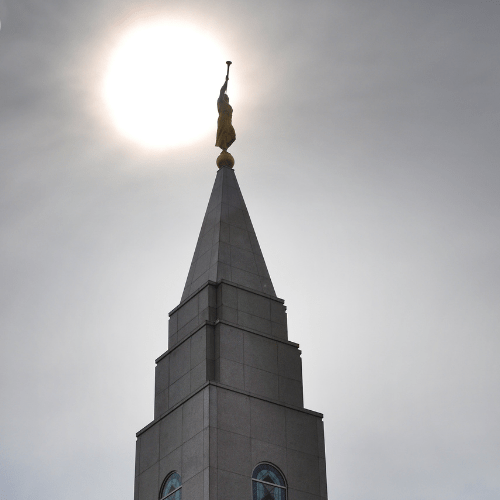A Voice of Warning
What do the Church of Jesus Christ of Latter-Day Saints believe?

Pratt was one of the original leaders of the Latter-Day Saint movement and he wrote multiple books and pamphlets on the traditions and beliefs followed by the church. He talks about how the prophecies of the Biblical scripture have only been partially fulfilled. Combined with his coherent and deep discussion about Mormon doctrine, it makes his book a classic piece of religious thoughts.
In the introduction, Pratt justifies the title and the book basically provides information about religious practices and prophecies of Mormonism and it gained a massive number of followers throughout North America when it was published. The book acts like a warning to honest Christians and prepares them to face the truths mentioned in the Bible, enclosed within the definitive messages of the Holy Ghost
Pratt feels that everyone should know and act upon these truths irrespective of whether the reader Is a Mormon or a Christian.
Everyone should realize that God is present in every territory on the planet and that all the essential looming events like the resurrection of the saints must come to fruition. Pratt also talks about the how the Mormons consider the Native Americans as descendants of the lost Tribes of Israel.

A Voice of Warning
A Voice of Warning is a dynamic and passionate 19th-century case for Mormonism. After it was published in 1837, It became Mormonism’s most Important non-canonical texts. The intelligent style of the book explains Mormonism and distinguishes it from the more traditional Protestant Christianity.
The church believes that God’s revelations still continue today. They believe revelations for a ward come to the bishop of that ward, revelation to direct a stake comes to the stake president, and revelation to direct a church would come to the church’s president. Latter-Day Saints also believe that its possible for human beings to receive a personal epiphany and spiritual advice for handling their personal matters and raising their families.
Latter Day Saints give significant importance to the lessons of the church leaders because they believe in the modern-day revelation given to them by the holy spirit. They appreciate and adore their words because it lets people think about the honesty of divine statements as present-day prophecies.

The doctrine of Mormonism is a belief that God is the creator of the universe and everything in it. However, the Mormon concept of -eternal’ differs from that of traditional Christians, according to them God’s eternal nature lives outside of time or space.
The Bible helps in understanding that Jesus formed His Church with prophets, teachers, apostles. pastors and several other Church officials whose primary goal was to unify all men in Jesus Christ and His teaching.
Old Testament prophets talked about the last days as an era when the entire ordinances and grace of the gospel would be available to humanity. Every glorious event that was supposed to take place in the present was spoken of by ancient prophets like Malachi, Joel, Daniel, Ezekiel and Jeremiah. For instance, Isaiah talked about the incredible work and wonder regarding the promised restoration of the teachings of Jesus Christ, and Peter talked about the indemnity of everything in the last days.
Parley P. Pratt
“Dignity and majesty have 1 seen but once, as it stood in chains, at midnight, in a dungeon in an obscure village of Missouri.”

- Parley Parker Pratt Sr. was born on April 12, 1807, in Burlington, New York, and died on May 13, 1857, in Arkansas, United States. His father was Jared Pratt and his mother was Charity Dickinson who was an offspring of Anne Hutchinson. He wedded Thankful Halsey in Canaan, New York on September 9, 1827. and they moved to Cleveland, Ohio afterwards. In Cleveland, he became a member of the “Disciples of Christ”, a reformed Baptist Society after being motivated by Sidney Rigdon’s sermons. He eventually took up preaching. He also believed in polygamy and had a massive family of 12 spouses, 30 children, and 266 grandchildren.
- His first wife, Thankful Halsey Pratt, died during the birth of their first child in March 1837. He tied the knot to his second wife, Mary Ann Frost Stearns, on May 14, 1837. Mary, a widow, and her daughter had arrived in Kirtland in 1836. Frederick G. Williams executed the marriage ceremony and David W. Patten baptized Mary Ann. Joseph Smith was not supportive of Latter-Day Saints who got married within such a short time after the death of their partner.
- Pratt and Mary Ann had a strong bond in their marriage, especially after she willingly went to prison in Missouri to join her husband. But after he started marrying other women, they separated. According to him, the reason why his marriage with Mary Ann didn’t work was that she was influenced by the false teachings that were spreading in the Church.
- Between 1846 and 1847, Pratt tried several times to persuade Mary Ann to join him on his journey to the west, but she decided otherwise and returned to Maine after spending the winter of 1846 to 1847 in a deserted Nauvoo. She received clothes and money from Pratt for her return and also some proceeds from when Pratt sold his home to a Roman Catholic priest. Till today, the Nauvoo home is used by the Catholic priests as a place of residence.
- Mary Ann traveled to Utah Territory in 1852, but she had severe disagreements with Pratt regarding how their children would be raised and hence Mary Ann got a divorce decree issued in 1853, with the help of Brigham Young. After that Mary Ann established herself in Pleasant Grove, Utah where she remained in the Latter-Day Saints Church, worked as a midwife, and eventually became a leading advocate to fight for Mormon women against the attacks of those opposed to polygamy.
- Matthew J. Grow said that being surrounded by a brimming world of descendants and wives is what gave Pratt happiness.
Publications
- The Millennium and Other Poems (1840)
- Late Persecutions of the Church of Jesus Christ of Latter-Day Saints: With a Sketch of Their Rise, Progress and Doctrine (1840)
- “A Dialogue between Joseph Smith and the Devir, 1844
- Key to the Science of Theology (1855)
- Key to the Silence of Theology (1855)
- The Autobiography of Parley Parker Pratt (1874, posthumous)
- The Autobiography of Parley Parker Pratt
To see more information about this topic or other religious topics, you may check the books and magazines available at www.wisdomebooksclub.com or visit our peals of wisdom page page by clicking on this link to access more interesting blog articles, games, quizzes, music videos, religious poems, Jewish recipes, popular sermons, and more.
